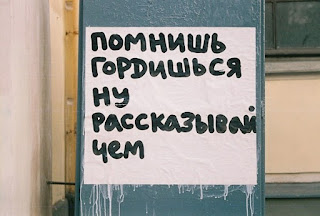It's surprising that these ads were created as early as at 1937. They promoted some products and services of the USSR for British tourists who would visit Moscow. These wonderful examples of advertising graphics and slogans are unique in some sense. So, USSR was the closed country secluded within the "iron curtain". There weren't a lot of tourists there, because it was very difficult to obtain a visa and to buy a ticket to Moscow. But in fact, before Stalin age, the new splendid country which was built according to Communist principles, was seen as a new Eldorado, as the place for social experimentation without any boundaries, as something which had nothing common with "rotting West" where capitalism still ruled and everything seemed boring for young enthusiasts. So, some modernist architects, artists, writers and journalists came to visit "new Russia", the USSR, and many of them saw it as the place for their experiments and for free roaming of all, even the craziest ideas. Thus, Le Corbusier built several edifices and houses in Moscow according to his principles of severe minimalism, economy of space etc. The harsh and severe lines of Le Corbusier's buildings would be strange and awkward among, say, Gothic spires of Prague or Parisian architectural abundance. But in a new country with new beginnings, which had put the end to its past, such architecture seemed to be exactly what was needed. But these "roaring twenties" in the Soviet Russia is the subject of the separate post I'll write soon... Now, let's come back to 1937. This year is considered to be one of the darkest years in Russian history. If you ask a Russian about his or her associations with this year, they will probably think of Stalin's repressions, sufferings of many people who were sent to the labour camps and prisons upon fabricated accusations in being a spy of some foreign countries or in "damaging of the Socialist property" or in "being a foreign and ideologically alien element" (thus, people who were originated from former aristocracy, civil servants, officers or merchants, people having relatives living abroad, priests and other representatives of former "privileged classes" were in the group of risk; many of them, if they wanted to survive, had to conceal their former occupation and origins, not to say anything about their family and relatives). So, 1937 is "the terrible year", the year of terror. But if we have a look at these cheerful ads, we'll think that there is no country better than the USSR. Tasty food, refined entertainment, technical achievements, spacial streets of the rebuilt Moscow, good-looking girls - that were export items which were to attract wealthy British tourists. And they look appealing even today - if we look at these old-school ads.

Aeroflot still exists today, though it's a private company and there are a lot of its commercial rivals. But "Aeroflot" remains "classy". The graphics here is excellent. I like this combination of light blue, navy and mint green.
Sturgeon is the Russian national fish, thus, the best "eatable" souvenir was to be the canned sturgeon. But you shouldn't forget about apples, pears and grapes - they were good too and a tourist would be pleased to eat such food.
The USSR was a very huge country. So, it could offer a plenty of products, especially for foreign tourists. Crab meat was one of such products. You can use it for making a tasty salad with lemons, greenery and eggs - and the graphic image shows that. I like the fonts and designer solutions here, especially this picture of salad-making process painted into the letter "C".
Gastronom is the Russian version of the Western supermarket. In 1937 "Gastronom" was still a trademark, but then it became the common term for all stores of this type. The abundance shown on this picture had nothing to do with reality - as for 1970s-1980s, the product assortment was scarce and people had to queue for hours in order to buy something worth (often, when your turn came nothing was left).

One of the Russian attractions is the Transsiberian Railway, which stretches out from Moscow to Vladivostok. The train trip along this railway route is a popular Russian excursion (the train trip will take a week). Therefore, the dining car is the special invention (and a very convenient too) for travelers. As we see, food on offer is very good: champagne, fruits, starters, and of course the famous tea in the special designed glass (with the iron holder; it's the collection subject). As for me, I've never eaten in dining cars while traveling by train (it seemed to be a quite expensive pleasure and sometimes assortment is rather scarce). But it should be convenient, especially if your journey lasts the whole week!

TZUM (Central Moscow Universal Store) still exists today in the fabulous art deco building at the same address as mentioned in this ad, but now it looks just like another one Moscow shopping mall. However, it has retained its reputation as the best universal store in Moscow. When the USSR still existed, people from all over the country came to buy something special in the TZUM they couldn't find on sale in their places. Now you can buy here production of European fashion houses, and, of course, the big ZARA store is located in it. It is especially busy during seasonal sales, and only in this time it somehow looks like it used to be in the years when it was the main shopping mall of the Russian capital.






















